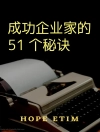Inventing isn’t easy! After identifying and presenting the 12 ‘valleys of death’, the real obstacles limiting the transition from an original idea to an innovative one, including the notion of socially responsible research, Knowledge Production Modes between Science and Applications 2 applies the concepts introduced in Volume 1.
The book starts off with 3D printing, which has essentially broken through all barriers by offering remarkable advantages over existing mechanical technology. The situation is different for 4D printing and bio-printing. First of all, we need to tackle the complexity inherent in these processes, and move away from disciplinarity to find robust, applicable solutions, despite the obstacles. This is possible in niche areas, but currently, low profitability still limits their general applicability and the willingness of researchers to embrace interdisciplinary convergence….
Tabella dei contenuti
Foreword: Additive Manufacturing: From 3D Printing to Bio-printing vii
Introduction to Volume 2 xi
Chapter 1. Socially Responsible Research (SRR) 1
1.1. Introduction 2
1.2. Setting the scene 5
1.2.1. Decision-making and ethics 11
1.2.2. Technological progress: the researcher and the risks 19
1.2.3. Scapegoating 29
1.3. Modes of action 39
1.3.1. The project framework: socially responsible research 42
1.3.2. Other considerations 44
1.3.3. Socially responsible research 46
1.3.4. A few examples 53
1.3.5. Authoritarian constraint 60
1.4. Provisional conclusion 65
1.5. Conclusion: from the 12 ‘Labors of Hercules’ to the 12 ‘death valleys’ 67
1.6. References 72
Chapter 2. 3D, 4D and Bio-printing Innovations and Additive Manufacturing 91
2.1. Introduction 92
2.2. Additive manufacturing or 3D printing 94
2.2.1. Invention of the additive manufacturing concept 96
2.2.2. ‘In-house’ activities 103
2.3. Reaching out to society 106
2.4. Consequences 111
2.5. 4D printing 113
2.5.1. Reminders about 4D printing 117
2.5.2. Gaps between paradigms 125
2.5.3. Conclusion 127
2.6. Bio-printing 129
2.6.1. Principle of bio-printing 130
2.7. Discussion 138
2.8. Conclusion 142
2.9. References 147
Chapter 3. Creativity and Additive Manufacturing 161
3.1. Toward a Big Bang of creativity 162
3.1.1. Background and theoretical considerations 163
3.1.2. Introduction 164
3.1.3. Just before the idea 166
3.1.4. Clarification 170
3.1.5. The question of finalized knowledge integration 175
3.1.6. What interdisciplinarity to call upon? 178
3.1.7. Grains of sand in the clarification process 179
3.1.8. Conclusion 183
3.2. A comparison with 3D, 4D and bio-printing 186
3.2.1. Additive manufacturing 187
3.2.2. 4D printing 191
3.2.3. Bio-printing 198
3.3. Conclusion 202
3.4. References 205
Conclusion 215
Index 227
Circa l’autore
Jean-Claude André is an ENSIC engineer and CNRS director, and has been involved in the research into light-matter interactions, which has led him to 3D and 4D printing. These examples have been matched by industrial transfers through support for startups.












